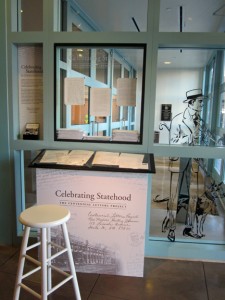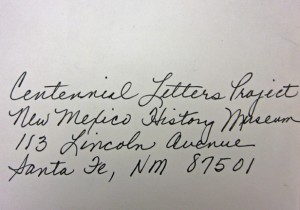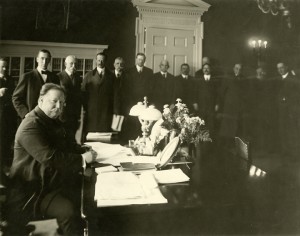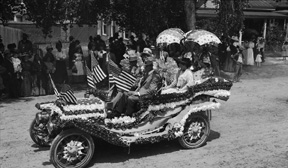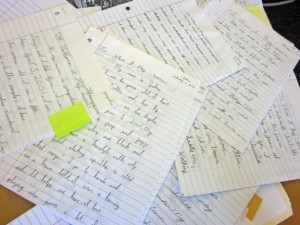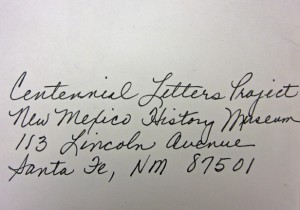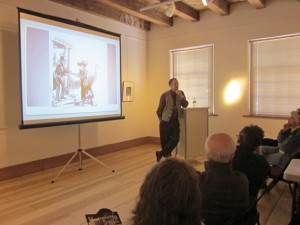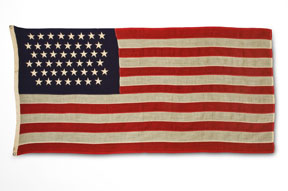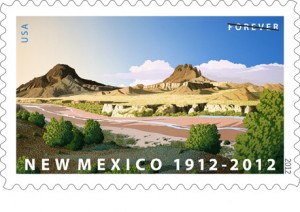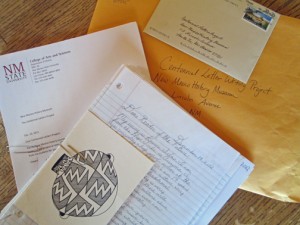 Sell everything, I’ve found a place where I can breathe and sleep at night.
Sell everything, I’ve found a place where I can breathe and sleep at night.
So began Kelly Murphy Lamb’s submission to the Centennial Letters Project. Hers was among an end-of-the-Centennial-year spurt of letters that has delighted us. Throughout the year, we’ve heard from people in nearly every part of the state, including quite a few schoolchildren. Some have told us how foreign the experience of writing a letter is; one complained that her hand hurt. Enough of them described a New Mexico sunset that we’re pretty darned sure we’ve got it down pat. Almost all of them shared some detail about their life–where they live, where they shop, what worries them, what makes them happy.
If we were of the unyielding sort, today would be a day to cut off all submissions. New Mexico, after all, became an official entrant in the United States of America on Jan. 6, 1912. But who are we to tell a willing writer not to write? Keep those centennial letters coming. We’ll open them, read them, and stash them in our archives so that future historians might know what all of us were up to in New Mexico’s centennial statehood year.
Here are some excerpts from the most recent batch, starting with Kelly Murphy Lamb of Albuquerque:
“Sell everything, I’ve found a place where I can breathe and sleep at night.” My great-grandfather William Murphy telegraphed to his wife, Mary, in Mammoth Spring, Misouri. The year was 1906. He was in Albuquerque, New Mexico Territory, where he spent the night after shipping a boxcar of race horses to El Paso, Texas.
William and Mary, after selling their holdings in Misouri, rode the train to Texico, New Mexico, first stop in the Territory. They established the Murphy Hotel, Dining Room and Saloon, where they served nearly all newcomers to New Mexico Territory. William also established a livery stable and wagon yard to help new homesteaders. …
From Monica Duarte, a student at New Mexico State University:
… I live in a little town called Mesquite; it is 20 minutes (15 miles) away from Las Cruces and 45 minutes (35 miles) to El Paso, Texas. There are lots of dairy farms on the road to my house and lots of planting fields. In the summer everything is green and alive, but in the winter everything looks desolated and withering. My neighborhood consists of 22 houses and one empty lot. … Every house has a basketball hoop, many have trampolines, and almost every family has some sort of pet. During the summer afternoons you can always hear children playing outside, screaming, yelling, and laughing for no reason at all. Many families have cookouts and they invite the neighbors. The day before school starts in August, most of the older kids get together around a camp fire to make s’mores and just have a nice time together. …
From Joshua S. Johnson, another student at New Mexico State University:
This fall semester will be my last semester as an undergraduate student. In a month from now, I find out whether or not I get active duty in the Army once I graduate and commission as an officer. It has been really hard just waiting to see if I will have a full-time career or not in the Army. It is crazy to think that in just one year from now I could be over in Afghanistan or wherever else the U.S. will be fighting overseas. … All I can do now is to enjoy this last semester with friends that I will probably not see for a long time and to make the best of it. …Thank you, New Mexico, for letting me be a part of this great state.
From Alyssa Ruben, a student at the Santa Fe Indian School:
I am from the pueblo of Laguna. I am currently 14 years old. … One thing that our leaders and elders are very worried about right now is preserving our language. The only fluent speakers are the elders of the pueblo. My grandpa is a fluent speaker and my younger brother is learning a lot from him but is not a fluent speaker. My ba-ba is very passionate about preserving our language. One thing that he is doing to keep the language alive is he got permission to start a language program at Laguna Elementary School. This is his first year working with the kids. … We still have our traditional practices that still go on but it is very sad because when you go into the kiva, you don’t hear very many people that speak the language in there, you mostly hear English. …
And finally, just a snippet from a lovely and haunting letter by Napoleon Garcia of Abiquiu:
Dear Future Grandchildren,
Today we celebrated our Indian heritage here in Abiquiu by honoring our patron saint St. Tomás de Apostle. The event started with eight newly trained children dancing our traditional dances dressed brightly in shades of red festooned by multi-colored ribbons. I proudly watched as two of my great-grandchildren danced with this group. My girls danced this fiesta as did some of my grandchildren. I was always an able dancer but now I’m on the sidelines with my drum to keep the beat going as they twirl around.
They danced into church where we had a special Mass for St. Tomás and then the dancers led the congregation next door to the Joe Ferran Gym for a festive meal of posole, beans and biscochitos—what else? Are you still honoring our traditions in this way in 2112? Is the church, dedicated to St. Tomás, built in 1938, still standing? Are you still feasting in the Joe Ferran Gym next door? Are you still dancing?

